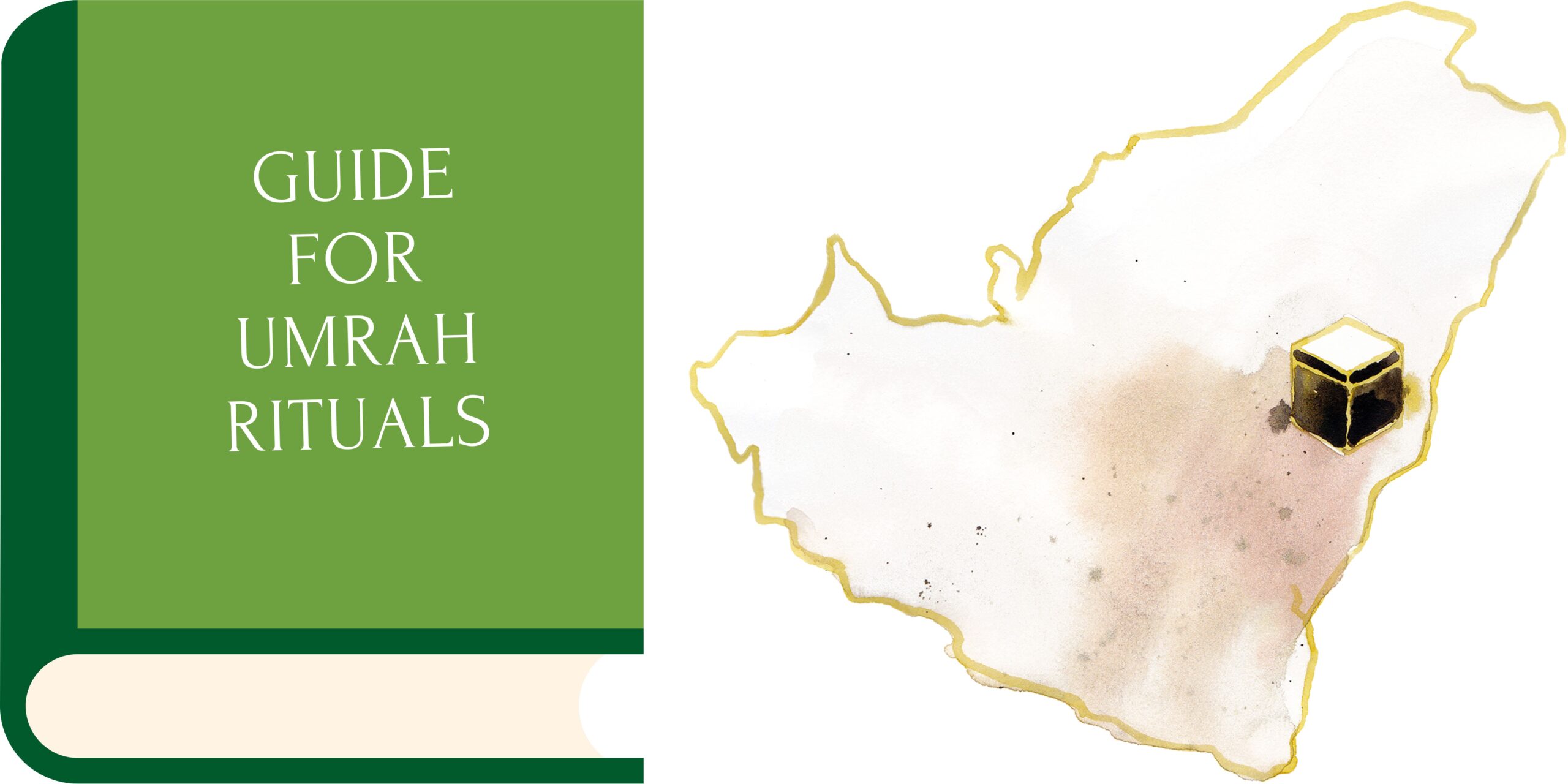Umrah is a spiritual journey taken by every Muslim to embrace Allah as the harbinger of peace and converse with him to remove inner impurities. Any pilgrim on this trip purifies their soul, heart, mind, and body from previous sins to stand out on Resurrection Day.
Umrah means ‘a visit’ to the Holy Kaaba (the Sacred House of God) in Arabic and can be undertaken by anybody any time of the year, unlike Hajj, which is an obligatory pilgrimage to Makkah performed every year during the first 10 days of Dhul Hijjah.
How to Perform Umrah?
Umrah rituals are the religious activities undertaken by pilgrims on their way to the Holy Kaaba. Al Umrah Al Mufradah (optional before Hajj) and Umrah Al Tammatu are two types of Umrah (obligatory before Hajj). The four actions of Umrah Al Mufradah anchor the traveler at the right time towards complete atonement.
Ihram from Miqat – Umrah Intent
Before entering Al Masjid Al Haram and performing Umrah, travelers must wear Ihram to make haram and traverse the five Miqats in the Haram boundaries.
- There is Dhu’l Hulaifah (Abbyar Ali) for pilgrims traveling to or through Madina.
- Pilgrims traveling from or passing via Syria, Morocco, or Egypt should go to Al-Juhfah (near Rabigh).
- For pilgrims traveling to or through Najd or Taif, there is the Qarn-al Manazil (As-Sail Al-Kabeer).
- For pilgrims traveling from or passing via Yemen, Pakistan, or Yemen through Yalamlam (Sa’adiyah).
- For pilgrims traveling to or via Iraq, there is a Dhat ‘Irq.
Before reaching Makkah, pilgrims must assume Ihram, which combines Niyyah and Talbiyah. Niyyah is the purpose to worship, whereas Talbiyah is a supplication prayer.
Tawaf – Holy Kaaba Worship Circumambulation
Muhrim performs Tawaf in Al Masjid Al Haram after assuming Ihram. The Muhrim must stop reciting the Talbiyah and circumambulate the holy Kaaba seven times by placing their right foot in and making Idtiba’a (as a reminder of the angels who circumambulate Allah’s house, al-Bayt al-Ma’mur). During Tawaf, men must bare their right shoulder by placing the Rida under their right arm and over their left shoulder.
They must circumambulate the Masjid Al Haram starting from the Black Stone and ending there to seek Allah’s closeness. The pilgrim must repeat the du’aa (supplication) during each of the seven circumambulations.
During circumambulations, pilgrims can kiss or touch the Black Stone. Alternatively, they can touch it with their right hand and begin the seven anticlockwise circumambulations while saying du’aa with the holy Kaaba on their left.
During the first three circumambulations, only males must make Ramal (fast-paced walk-on entry into the sacred Kaaba), while the remaining four are accomplished by walking between the al Rukn al Yamani and the Black Stone.
The last circumambulation concludes where the first one began to guarantee pilgrims didn’t move or fall behind. Tawaf ends after the seventh circumambulation and eight Istilam. Men must now cover their shoulders with the Ihram sheet.
Tawaf is followed by Salat of Tawaf, which includes two short rak’aa’s and the drinking of pure Zamzam water from the Well of Zamzam in the basement of the Sacred Mosque while offering prayer to Allah. The Salat of Tawaf can be performed behind Maqam Ibrahim (the Ibrahim station).
After drinking Zamzam, pilgrims pray at the Multazam, between the Black Stone and the Kaaba’s entryway.

